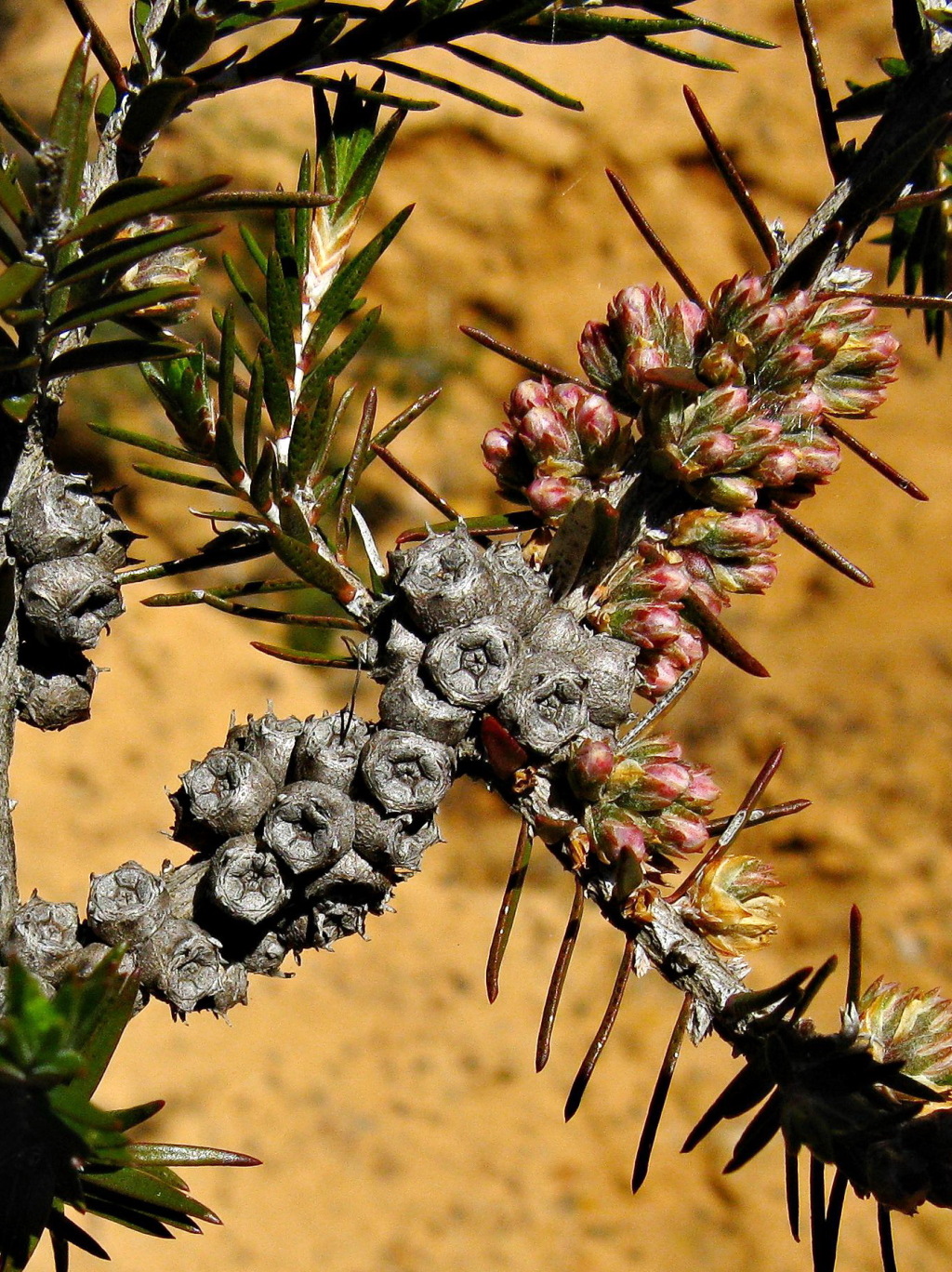Melaleuca wilsonii
F.Muell. Violet Honey-myrtleWidely spreading shrub to 2 m high, glabrous except for young shoots and hypanthium; bark rough, flaking or corky on older stems. Leaves decussate, linear-lanceolate, 8–15 mm long, 1–2 mm wide, acuminate, acute, more or less sessile, distinctly oil-dotted on lower surface only, nerves 3 but faint. Flowers in lateral clusters, often almost continuous along stem for 10 cm or more; clusters of 2–5 flowers on a short stalk and subtended by papery triangular bracts; stamens 7–15 per bundle, pale to dark pink or lilac, claw 5–7 mm long, free part of filaments 3–4 mm long. Capsules 3–5 mm wide, corky with persistent pointed or rounded sepals on the rim. Flowers spring.
LoM, MuM, Wim, VRiv, OtP, Gold, CVU, GGr, Strz. Also SA. Mostly on seasonally inundated, poorly draining, sandy or clay soils in mallee or dry woodland communities.
Spencer, R.D. (1996). Melaleuca. In: Walsh, N.G.; Entwisle, T.J., Flora of Victoria Vol. 3, Dicotyledons Winteraceae to Myrtaceae, pp. 1027–1034. Inkata Press, Melbourne.
 Spinning
Spinning
